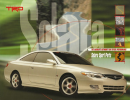mmcartalk
Expert
- Messages
- 4,158
- Reactions
- 2,675
MM Retro-Write-Up: First-Generation 1998-2003 Toyota Solara.
IN A NUTSHELL: A very nice mid-sized coupe/convertible, but perhaps the right vehicle at the wrong time.

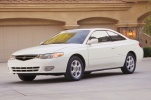
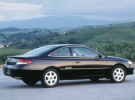
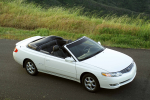
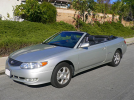
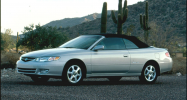
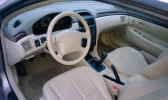
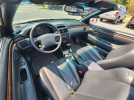
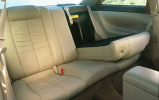
^^^^ Coupe Rear Seat
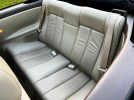
^^^^ Convertible Rear Seat
When the Toyota Camry was first released in the American market in late 1983, it became an almost instant success. Eventually the Toyota line-up grew to include a number of different vehicles derived from the basic Camry platform….sedans, coupes, station-wagons, convertibles, crossovers, minivans…..you name it. Some of those derivatives and successors, of course, still remain in production today.
One of those derivatives, of course, was the mid-sized Toyota Solara (also known as the Camry Solara), which debuted in 1998, in coupe and convertible versions. The Solara was intended to be a somewhat classier version of the Camry, somewhat more sport-oriented, though not quite to a level of a Lexus. Engine-choices (FWD only) were a normally-aspirated 2.2L in-line four or a 3.0L V6, and transmissions were a 5-speed manual or 4-speed automatic wth the four, and 5-speed automatic with the V6. For purposes of this write-up, I want to concentrate on the First-Generation version, as I was a big fan of this first version, and was not anywhere near as impressed with the Second-Generation version, which I thought looked more awkward, used cheaper materials, and was generally not as well-built as the first-generation version.
Though primarily designed as a coupe, convertible versions were also offered for both generations. As I said above, I particularly liked the first version, and did consider both the couple and the convertible as a possible purchase, although at the time, I was generally more enamored with the Saturn S-Series sedans/wagons and the way they were designed. I had had previous ownership experience, of course, with a mid-90s Toyota Celica, and that experience had been very good. The First-generation Solara, to my tastes, drove a little more smoothly than the Celicas of the time, seemed just as well-built, and the convertible version, as I recall, did not have a lot of body/cowl-shake, one of the traditional banes of older convertible. I don’t recall personally sampling the second-generation convertible, but reviewers, at the time, said it had more body-shake than the first version. This was not surprising, as I did look at the second-generation coupe and, as I said above, was not as impressed with it as much as the first version. However, both of the convertibles (I can definitely vouch for the first one) were far better than the competing mid-sized Chrysler LeBaron/Sebring and Pontiac G6 convertibles of the time, both of which, IMO, were poorly-built, used ultra-cheap materials, were unreliable, and, if I can use a four-letter word, basically junk. However, even poorly-done vehicles sometimes have some good features, and, to their credit, the LeBaron/Sebring convertibles managed to include a good amount of room in the back seat by convertible standards (convertibles are often tight in back because of the need for extra space for the drop-tops to fold), and the G6 gave you a weather-resistant folding hard-top for a reasonable price. Folding hard-tops, or course, are usually more expensive to produce than traditional fabric tops, even with power-assist. The Ford Mustang and Chevy Camaro also offered convertibles, but they were hard-core pony/muscle-cars, uncomfortable, and in a completely different class than the versatile and easy-driving Solaras. The Mazda Miata convertible was well-built/reliable and loads of fun to drive on a twisty road, ultra-responsive, had an ingeniously-simple manual-top, but was midget-sized, could be difficult for larger adults to get in and out of, and was totally unsuited for and geared too short for higher speeds in highway-cruising.
As would be expected, the Solaras rode and drove more or less like regular Camrys, even though they were considered a little more sport-oriented. But they still emphasized comfort over sportiness..particularly compared to the recent firm-riding Camrys with the low-profile tires we have seen in the last few years. The interiors were, IMO, well-designed, with comfortable seats, easy-to-use controls, and easily-readable displays. The coupe rode a little more quietly than the convertible (top-up), but, with a more solid roof, that was to be expected….still, the convertible was reasonably quiet. In fact, I liked the first-generation Solaras more than some of the mid-sized Lexus products of the era. These first-generation versions were done before we started to see some serious bean-counting and compromise in Toyota designs, and it showed.
Though generally almost bulletproof, the First-Generation Solaras did have one significant mechanical issue….some of the models with the 3.0L V6, like other Toyota/Lexus vehicles using this power plant, were extremely sensitive to oil changes, and had little if any margin for error in delay or neglect in changing the oil and filter, as some owners are inclined to do. You either kept the oil and filter changed at frequent intervals, or risked having sludge and gel damage or ruin the engine….a number of engines were replaced for this reason. Toyota, however, often ate the bill for the new engines as long as evidence was produced that the oil and filter had been changed, using the proper oil and filter, at least once in the preceding 12 months before engine failure. This happed in those V6s because the engineers designed them with narrower-than-average oil-passages to make the oil run hot and increase engine-temperature, thereby cutting down on emissions. It worked for emissions, but contributed to quicker-than-average oil-breakdown from the heat.
Unfortunately, the Solara was introduced at a time when public demand in the American market for coupes and convertibles was starting to decline, the SUV-craze was starting to pick up, and when many buyers were trading in their former minivans and station-wagons for new Ford Explorers, Jeep Grand-Cherokees, and Chevy Blazers/Tahoes. As the 1990s progressed, fewer and fewer buyers came into Toyota showrooms looking for mid-sized passenger-car-derivitives like the Solara. Add to that the fact (at least IMO) that the Second-Generation was not as nearly as well-done as the first, and it was clear by the md-late part of the next decade that cars like this just weren’t going to be attractive much longer to them American public. So, like so many other nice concepts and vehicles, the Solara faded into automotive history.
And, and Always, Happy Vehicle-Memories.
MM
__________________
DRIVING IS BELIEVING

IN A NUTSHELL: A very nice mid-sized coupe/convertible, but perhaps the right vehicle at the wrong time.









^^^^ Coupe Rear Seat

^^^^ Convertible Rear Seat
When the Toyota Camry was first released in the American market in late 1983, it became an almost instant success. Eventually the Toyota line-up grew to include a number of different vehicles derived from the basic Camry platform….sedans, coupes, station-wagons, convertibles, crossovers, minivans…..you name it. Some of those derivatives and successors, of course, still remain in production today.
One of those derivatives, of course, was the mid-sized Toyota Solara (also known as the Camry Solara), which debuted in 1998, in coupe and convertible versions. The Solara was intended to be a somewhat classier version of the Camry, somewhat more sport-oriented, though not quite to a level of a Lexus. Engine-choices (FWD only) were a normally-aspirated 2.2L in-line four or a 3.0L V6, and transmissions were a 5-speed manual or 4-speed automatic wth the four, and 5-speed automatic with the V6. For purposes of this write-up, I want to concentrate on the First-Generation version, as I was a big fan of this first version, and was not anywhere near as impressed with the Second-Generation version, which I thought looked more awkward, used cheaper materials, and was generally not as well-built as the first-generation version.
Though primarily designed as a coupe, convertible versions were also offered for both generations. As I said above, I particularly liked the first version, and did consider both the couple and the convertible as a possible purchase, although at the time, I was generally more enamored with the Saturn S-Series sedans/wagons and the way they were designed. I had had previous ownership experience, of course, with a mid-90s Toyota Celica, and that experience had been very good. The First-generation Solara, to my tastes, drove a little more smoothly than the Celicas of the time, seemed just as well-built, and the convertible version, as I recall, did not have a lot of body/cowl-shake, one of the traditional banes of older convertible. I don’t recall personally sampling the second-generation convertible, but reviewers, at the time, said it had more body-shake than the first version. This was not surprising, as I did look at the second-generation coupe and, as I said above, was not as impressed with it as much as the first version. However, both of the convertibles (I can definitely vouch for the first one) were far better than the competing mid-sized Chrysler LeBaron/Sebring and Pontiac G6 convertibles of the time, both of which, IMO, were poorly-built, used ultra-cheap materials, were unreliable, and, if I can use a four-letter word, basically junk. However, even poorly-done vehicles sometimes have some good features, and, to their credit, the LeBaron/Sebring convertibles managed to include a good amount of room in the back seat by convertible standards (convertibles are often tight in back because of the need for extra space for the drop-tops to fold), and the G6 gave you a weather-resistant folding hard-top for a reasonable price. Folding hard-tops, or course, are usually more expensive to produce than traditional fabric tops, even with power-assist. The Ford Mustang and Chevy Camaro also offered convertibles, but they were hard-core pony/muscle-cars, uncomfortable, and in a completely different class than the versatile and easy-driving Solaras. The Mazda Miata convertible was well-built/reliable and loads of fun to drive on a twisty road, ultra-responsive, had an ingeniously-simple manual-top, but was midget-sized, could be difficult for larger adults to get in and out of, and was totally unsuited for and geared too short for higher speeds in highway-cruising.
As would be expected, the Solaras rode and drove more or less like regular Camrys, even though they were considered a little more sport-oriented. But they still emphasized comfort over sportiness..particularly compared to the recent firm-riding Camrys with the low-profile tires we have seen in the last few years. The interiors were, IMO, well-designed, with comfortable seats, easy-to-use controls, and easily-readable displays. The coupe rode a little more quietly than the convertible (top-up), but, with a more solid roof, that was to be expected….still, the convertible was reasonably quiet. In fact, I liked the first-generation Solaras more than some of the mid-sized Lexus products of the era. These first-generation versions were done before we started to see some serious bean-counting and compromise in Toyota designs, and it showed.
Though generally almost bulletproof, the First-Generation Solaras did have one significant mechanical issue….some of the models with the 3.0L V6, like other Toyota/Lexus vehicles using this power plant, were extremely sensitive to oil changes, and had little if any margin for error in delay or neglect in changing the oil and filter, as some owners are inclined to do. You either kept the oil and filter changed at frequent intervals, or risked having sludge and gel damage or ruin the engine….a number of engines were replaced for this reason. Toyota, however, often ate the bill for the new engines as long as evidence was produced that the oil and filter had been changed, using the proper oil and filter, at least once in the preceding 12 months before engine failure. This happed in those V6s because the engineers designed them with narrower-than-average oil-passages to make the oil run hot and increase engine-temperature, thereby cutting down on emissions. It worked for emissions, but contributed to quicker-than-average oil-breakdown from the heat.
Unfortunately, the Solara was introduced at a time when public demand in the American market for coupes and convertibles was starting to decline, the SUV-craze was starting to pick up, and when many buyers were trading in their former minivans and station-wagons for new Ford Explorers, Jeep Grand-Cherokees, and Chevy Blazers/Tahoes. As the 1990s progressed, fewer and fewer buyers came into Toyota showrooms looking for mid-sized passenger-car-derivitives like the Solara. Add to that the fact (at least IMO) that the Second-Generation was not as nearly as well-done as the first, and it was clear by the md-late part of the next decade that cars like this just weren’t going to be attractive much longer to them American public. So, like so many other nice concepts and vehicles, the Solara faded into automotive history.
And, and Always, Happy Vehicle-Memories.
MM
__________________
DRIVING IS BELIEVING



